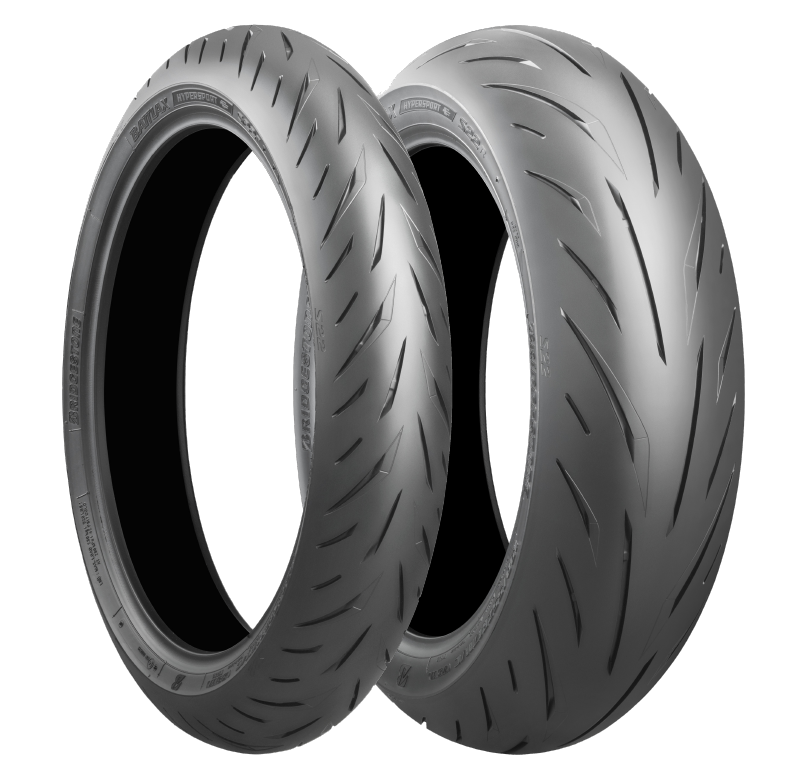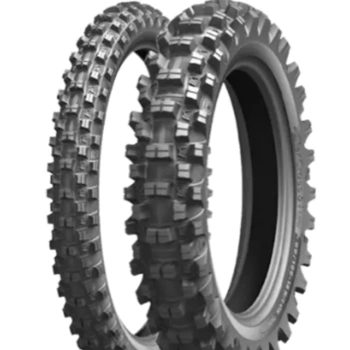Everything about the Important Motorcycle Tire Overview for Ideal Bike Maintenance and Performance
The Vital Motorbike Tyre Guide offers as a vital source for bikers seeking to improve their bike's performance and safety. motorcycle tyre guide. It provides understandings into various tire types and specifications that affect handling and resilience. Additionally, comprehending proper maintenance techniques can substantially extend tyre life. Nevertheless, several cyclists ignore vital variables that influence their riding experience. Checking out these elements can lead to informed choices that eventually boost both safety and satisfaction when driving
Recognizing Motorbike Tyre Kind
When choosing motorbike tires, recognizing the various kinds available is crucial for peak efficiency and security. Motorcyclists encounter different tire categories, each developed for certain riding styles and conditions. Sport tires emphasize grip and responsiveness, making them suitable for high-performance bikes and track use. Touring tires, on the other hand, emphasis on sturdiness and comfort, ideal for long-distance experiences. Off-road tyres feature aggressive walk patterns, providing traction on uneven surfaces, while dual-sport tires supply versatility for riders that change in between off-road and on-road conditions.Additionally, cruiser tires are developed for security and a smooth trip, providing to the unique requirements of cruisers and visiting bikes. Recognizing these classifications enables riders to pick tires that align with their riding behaviors and environmental conditions, eventually improving both security and efficiency. Each type plays an important duty in guaranteeing a remarkable riding experience tailored to the specific motorcyclist's needs.
Trick Tire Specifications Discussed
Picking the proper motorcycle tires includes greater than just recognizing the different types; it also needs experience with crucial requirements that affect efficiency and security. Secret specs include tyre size, which is typically shared as a series of numbers indicating width, facet proportion, and rim diameter. This code is vital for making sure compatibility with the motorcycle.Another vital specification is the lots index, indicating the optimum weight a tyre can support. The rate score denotes the optimal speed a tire can safely handle, crucial for performance enthusiasts.Additionally, walk pattern and rubber compound impact grasp, stability, and use features. Tyres with a softer compound often tend to offer better hold yet wear quicker, while harder substances last longer yet may give up grip. Comprehending these specifications allows riders to make informed choices, enhancing both their safety and security and riding experience.
Just how to Choose the Right Tyres for Your Bike
Exactly how can a motorcyclist warranty they pick the right tyres for their bike? Picking the appropriate tyres involves understanding the particular needs based on riding design, weather condition, and terrain problems. Riders need to initially consult the bike's handbook to recognize advised tyre sizes and specifications.Next, they need to review the sort of riding they plan to do-- whether it's commuting, exploring, or off-road. Each group has distinctive tire designs customized for peak performance.Additionally, riders need to examine step patterns; much deeper treads offer far better hold in wet problems, while shallower treads enhance stability on completely dry surfaces.Lastly, it is essential to take a look at the tire's building and material, as these elements affect toughness and handling (motorcycle tyre guide). By evaluating these aspects thoroughly, a cyclist can confidently select tyres that boost safety and security, performance, and total riding experience
The Relevance of Tire Pressure and Upkeep
Tyre pressure is a considerable element of motorcycle maintenance that straight impacts security and efficiency. Preserving the proper tyre stress assurances excellent call with the roadway, improving grasp and security during rides. Under-inflated tires can cause raised rolling resistance, leading to inadequate gas efficiency and excessive endure the tyres. Alternatively, over-inflated tires may lower and create a severe experience grip, particularly in wet conditions.Regularly monitoring tyre pressure, preferably before each adventure, is essential to keeping the motorbike's total performance. Bikers must describe the maker's requirements for the suggested stress levels. Additionally, keeping an eye on tyre condition and readjusting stress according to tons and riding conditions is crucial for safety and security. Correct tire upkeep contributes to extended tyre life expectancy, far better handling, and improved braking performance. Ultimately, consistent attention to tyre pressure and maintenance is vital for assuring a delightful and risk-free riding experience.

Identifying Signs of Tire Put On and Damage
Recognizing indicators of tyre wear and damage is vital for keeping bike security and performance. Trick signs include evaluating walk deepness and carrying out a comprehensive aesthetic examination for any visible damages. Dealing with these factors promptly can protect against additional problems when traveling.
Step Depth Analysis
As cyclists take to the roadways, the significance of examining tread depth can not be overstated, because used or harmed tires can considerably affect safety and performance. Walk deepness straight influences traction, braking distance, and cornering security. To examine tread deepness, motorcyclists must make use of a step depth scale, gauging the grooves at different points throughout the tyre. A depth of 2mm or much less suggests significant wear and demands instant substitute. In addition, motorcyclists can utilize the "dime test" by putting a coin into the walk; if the top of Lincoln's head is noticeable, the tyre is also worn. Routine checks guarantee peak grasp on diverse roadway conditions, promoting a more secure riding experience while enhancing the overall handling of the motorbike.
Visual Damages Assessment
Inspecting motorbike tyres for aesthetic damages is crucial for keeping safety and security on the roadway. Bikers ought to consistently check out tires for signs of wear such as splits, protrudes, or punctures. Uneven wear patterns may suggest positioning concerns or inappropriate inflation, resulting in endangered performance. Additionally, inspecting for international things installed in the walk can protect against prospective blowouts. Riders ought to pay very close attention to the sidewalls, as any abrasions or cuts can compromise the tire's framework. Making certain that the step is devoid of excessive wear is vital for perfect grasp. Normal aesthetic assessments not just improve safety but likewise prolong the life of the tires, making sure a smoother and extra trusted riding experience. Prompt detection of damage can avoid expensive repairs and mishaps.
Seasonal Tire Factors To Consider for Various Riding Conditions
When considering bike tires, seasonal problems play an important role in efficiency. In wet weather condition, tires developed for enhanced grasp and water variation become necessary for security. Furthermore, wintertime riding requires certain tire features to guarantee peak grip on cool, possibly unwelcoming surface my link areas.

Wet Climate Efficiency
Wet climate condition present unique obstacles for motorcyclists, making the choice of tires important for security and efficiency. Tires developed for damp weather condition generally feature deeper footsteps and specialized rubber compounds that enhance grip on slippery surface areas. These tires are crafted to carry water away, reducing the threat of aquaplaning and enhancing stability throughout rainfall. Motorcyclists ought to think about tyres with a well balanced layout, providing both grip and toughness in damp problems. Furthermore, preserving proper tyre stress is essential, as under-inflated tyres can compromise efficiency. Normal examinations for wear and damages are needed to guarantee peak feature when encountered with rain-soaked roadways. Picking proper wet-weather tires ultimately contributes to a more secure and much more delightful riding experience.
Winter Months Tire Demands
Riding directory in winter season conditions postures unique obstacles that demand specific tire demands to ensure safety and security and performance. Winter months motorbike tyres are designed with deeper footsteps and softer rubber compounds, offering enhanced hold on chilly and unsafe surface areas. This is important for preserving grip on ice, snow, and wet roadways. Additionally, winter tyres often include a special step pattern that assists network water away, decreasing the threat of aquaplaning. Motorcyclists should additionally consider the tyre's temperature durability, as performance can lessen in severe cold. It is necessary to regularly examine tire stress, as it can go down significantly in reduced temperatures. By selecting the suitable winter season tyres, riders can browse extreme conditions with better confidence and security, ensuring a much safer riding experience.
Tips for Appropriate Tire Storage Space and Durability
Proper tyre storage space is crucial for keeping their longevity and performance with time, as ignoring this facet can lead to early degeneration. To guarantee perfect storage, it is vital to keep tires in a cool, completely dry setting away from direct sunshine and sources of warm, such as heating systems or radiators. Extreme warm can cause rubber substances to damage down, jeopardizing the tire's integrity.Additionally, tires must be stored upright or stacked horizontally, depending upon their kind. It is recommended to revolve them regularly to prevent level places if piled. Correct inflation is also crucial; tires ought to be pumped up to the producer's advised stress to stay clear of deformation.Lastly, it is helpful to cover tires with a protective product to secure them from dust and contaminants. Adhering to these suggestions will assist extend the life of motorbike tires, guaranteeing they remain efficient and risk-free for use when the riding season resumes.
Often Asked Questions
Just how Often Should I Replace My Motorbike Tyres?

Can I Mix Different Tire Brands on My Motorbike?
Mixing various tyre brands on a motorbike is generally not recommended. Variants in walk patterns, rubber substances, and performance characteristics can lead to unforeseeable handling and compromised safety, potentially enhancing the threat of crashes.
What Is the Life expectancy of a Motorbike Tire?
The life expectancy of a motorcycle tyre normally ranges from 5,000 to 15,000 miles, affected by elements such as riding style, tyre, and terrain maintenance. Normal assessments can help ensure peak performance and safety and security throughout their usage.
Just how Do I Deal With Old Bike Tyres?
When getting rid of old motorbike tyres, they should be taken to marked recycling centers. Many local waste management services likewise supply tyre disposal programs, making certain eco friendly handling and conformity with local laws relating to tire waste.
Are There Any Tyre Guarantees Offered for Bikes?
Several motorbike tyre producers use guarantees that cover issues in product and workmanship. The specifics vary by brand and model, so it's necessary for cyclists to examine individual guarantee terms prior to buying brand-new tires. Off-road tires feature hostile walk a knockout post patterns, giving grip on unequal surface areas, while dual-sport tyres use adaptability for cyclists that move between on-road and off-road conditions.Additionally, cruiser tyres are made for stability and a smooth experience, providing to the special demands of cruisers and exploring bikes. Each group has unique tyre styles customized for peak performance.Additionally, motorcyclists need to evaluate tread patterns; deeper treads use much better grasp in damp problems, while shallower footsteps enhance security on dry surfaces.Lastly, it is crucial to examine the tire's building and material, as these aspects affect durability and handling. Correct tyre upkeep contributes to prolonged tire lifespan, better handling, and enhanced braking performance. Proper inflation is also vital; tires should be pumped up to the producer's suggested pressure to prevent deformation.Lastly, it is beneficial to cover tires with a protective material to shield them from dust and pollutants. The lifespan of a motorcycle tyre usually varies from 5,000 to 15,000 miles, affected by variables such as riding terrain, tyre, and style upkeep.
Comments on “A rider’s roadmap to using the motorcycle tyre guide for more informed tyre selection”